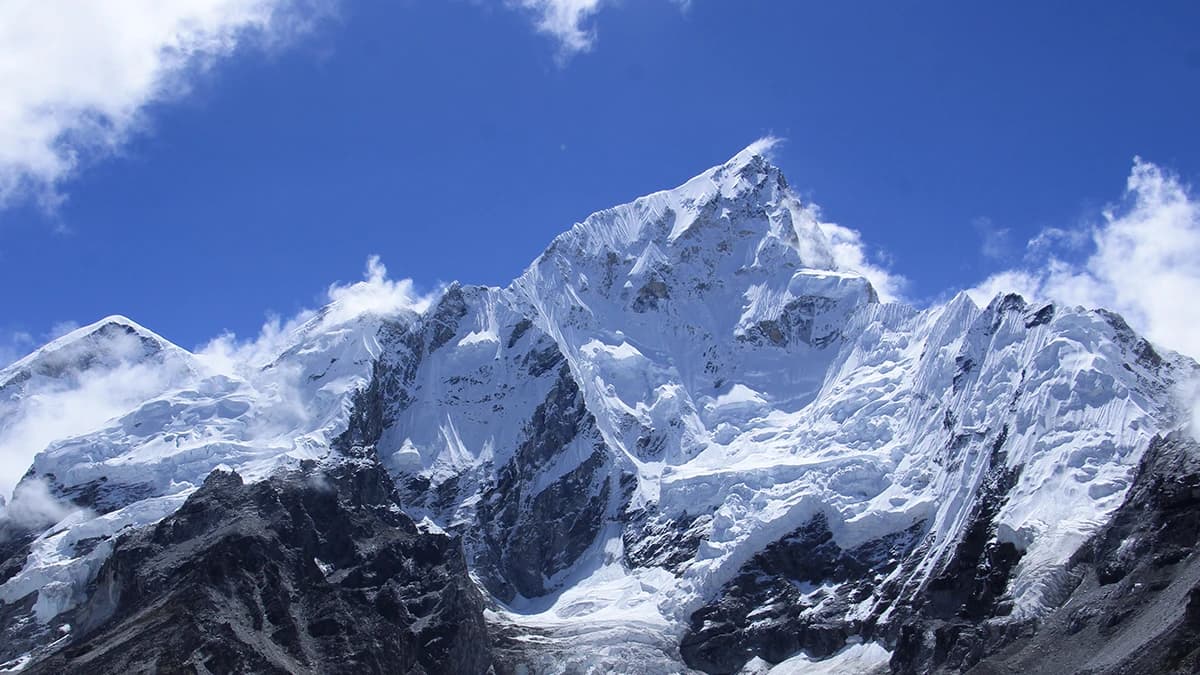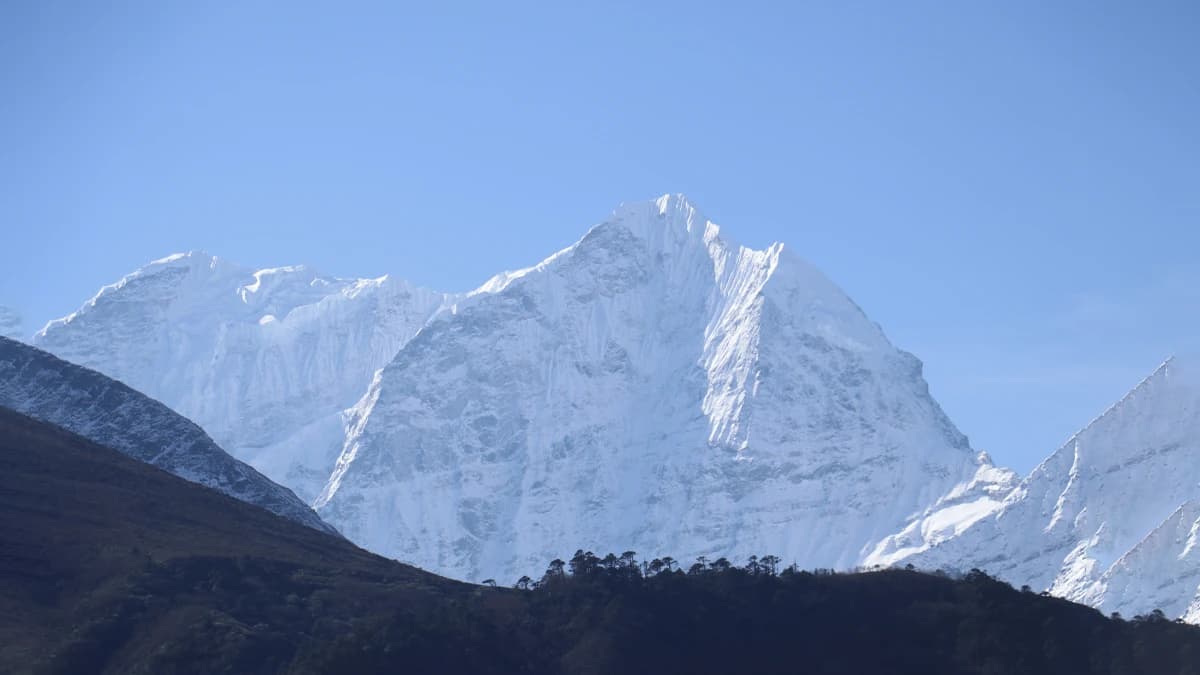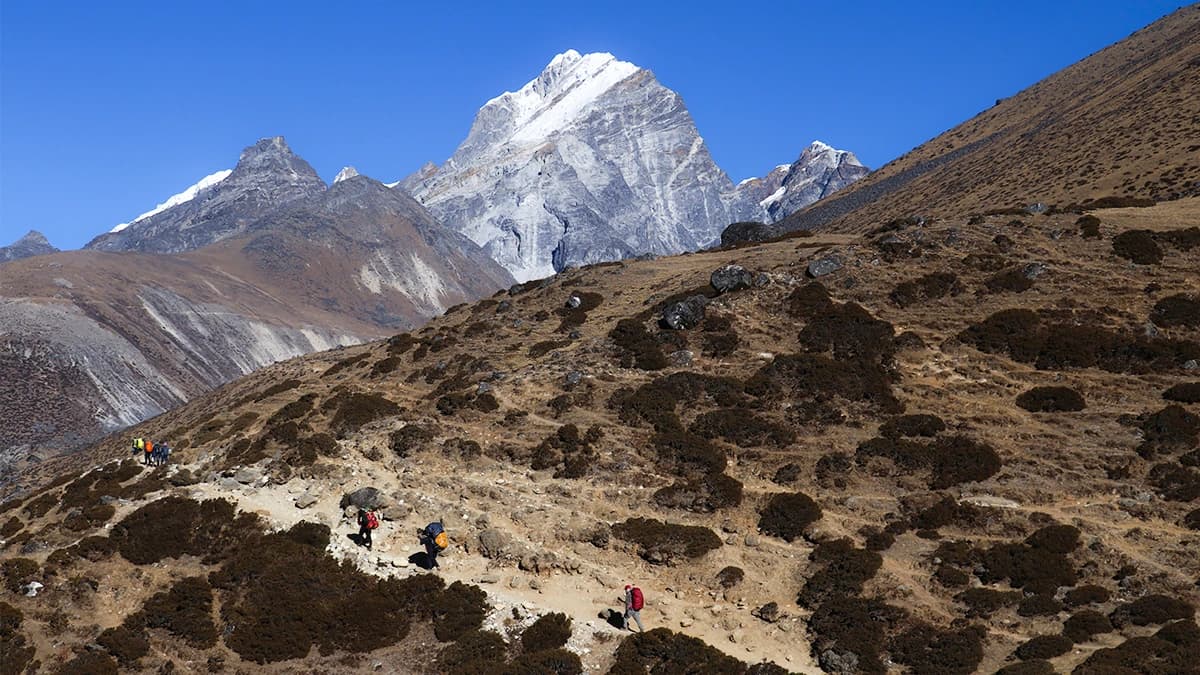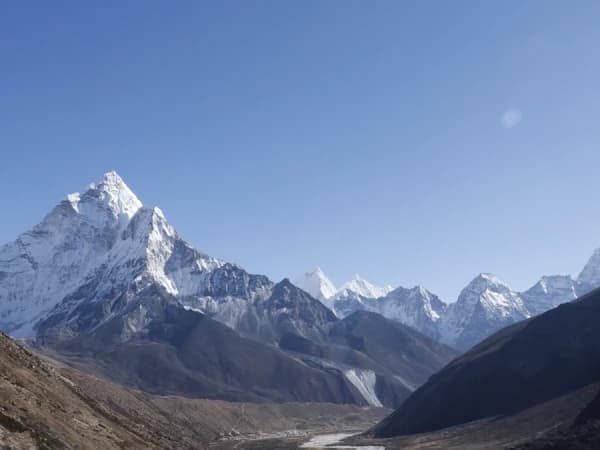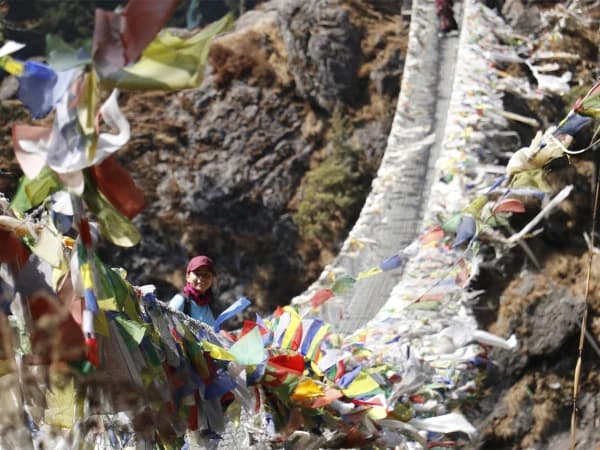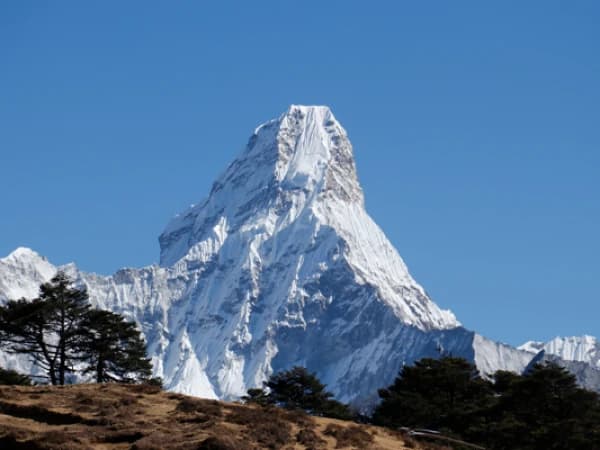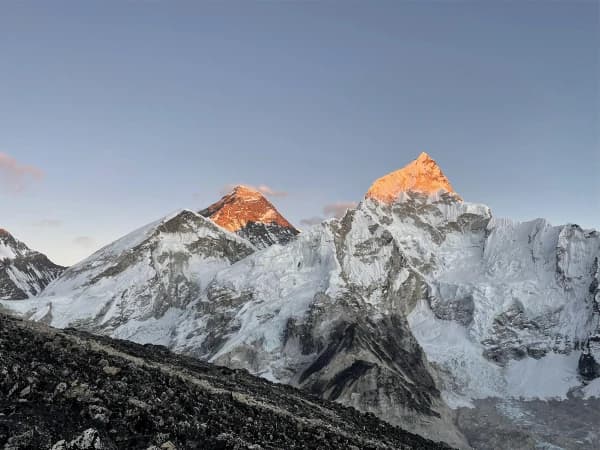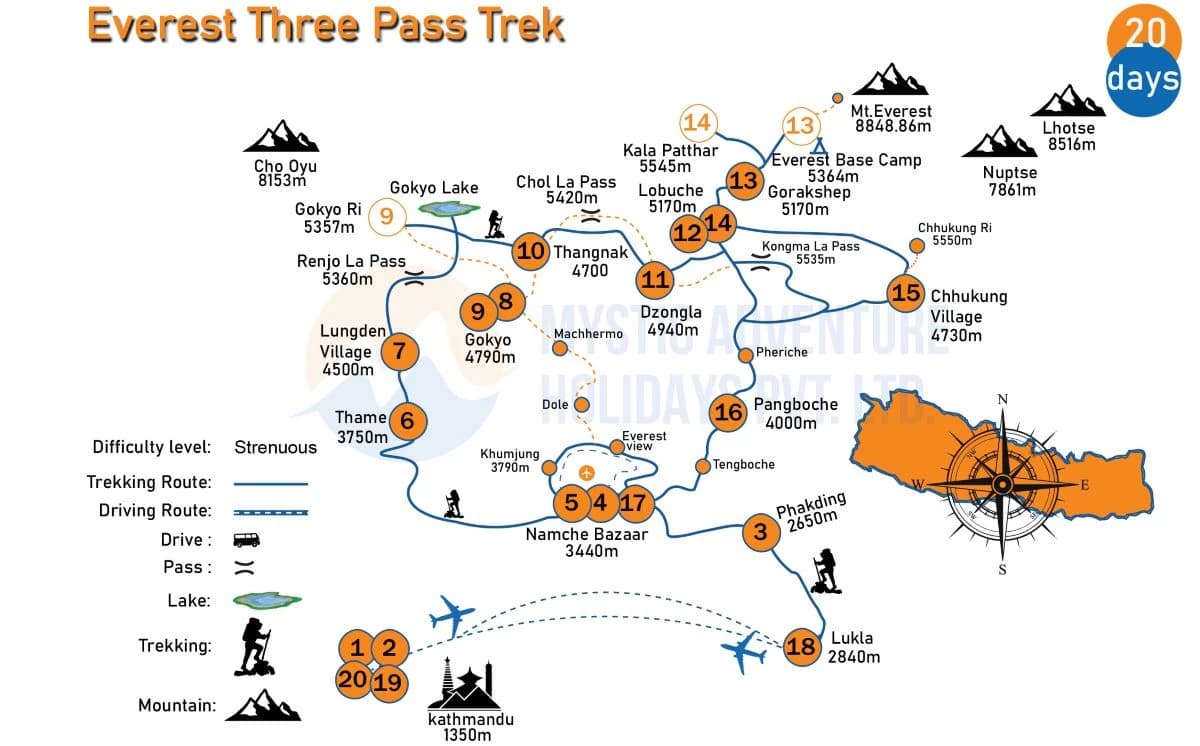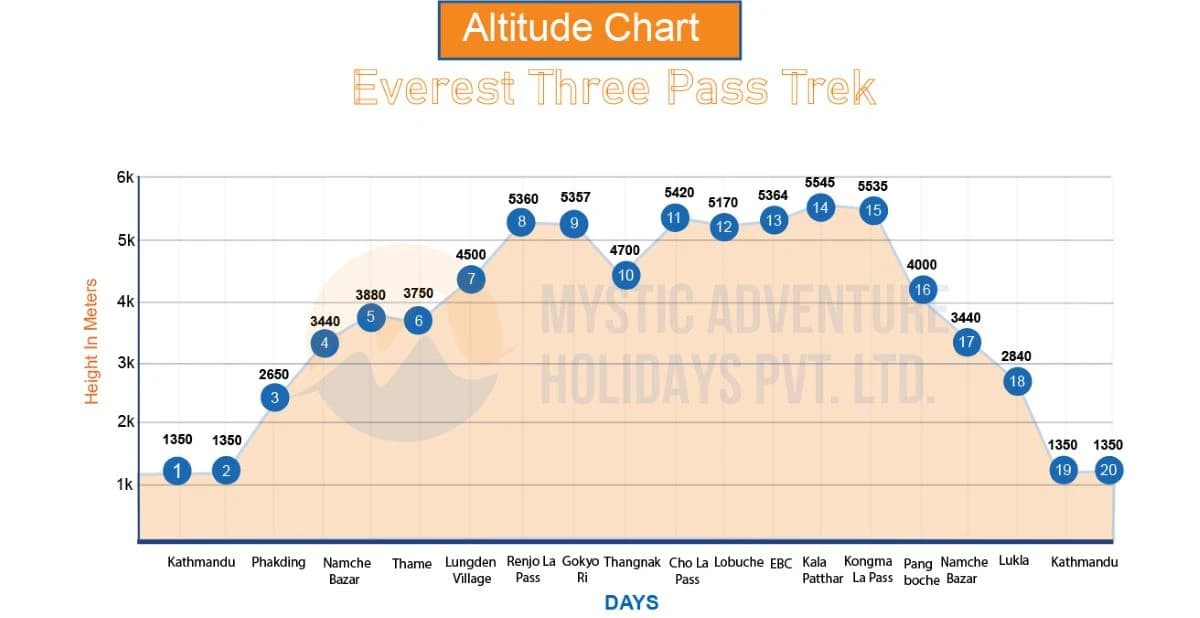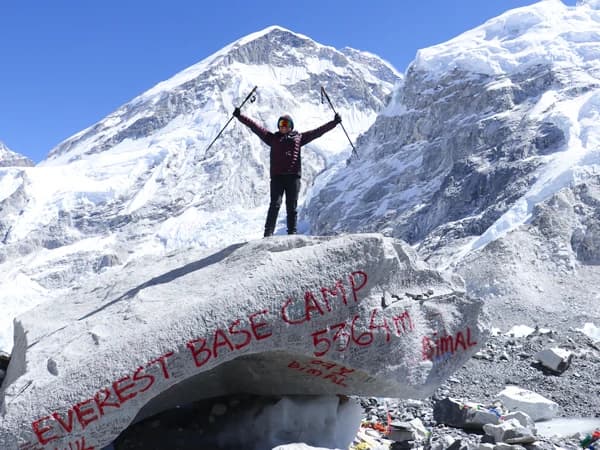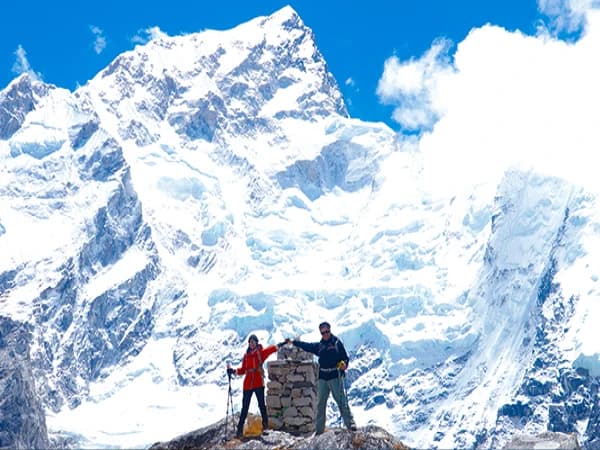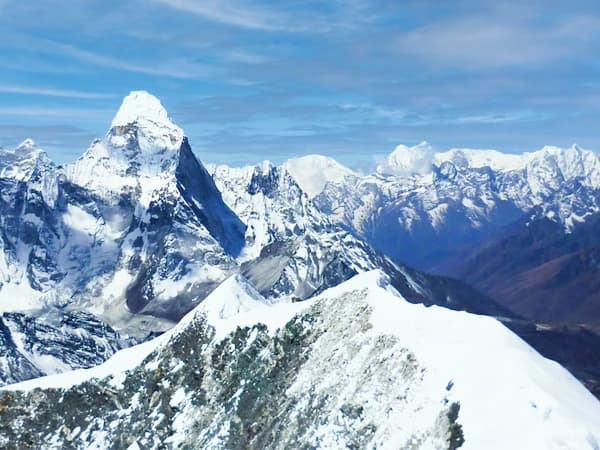Everest Three Passes Trek 2026 is a thrilling adventure that requires crossing the three high-altitude passes, Renjo La Pass, Cho La Pass, and Kongma La Pass. Besides it, the Everest three-pass trekking itinerary includes visits to the various other iconic places like Gokyo Lakes, everest base camp, Kala Patthar, and historical and religious sites.
General Highlights of 2026 trek
- Exploring the heritage sites in Kathmandu Valley, including Pashupatinath Temple, Boudhanath Stupa, Patan Durbar Square, and Swyambhunath Stupa.
- Short and scenic flight to the world’s most dangerous airport in lukla.
- Stunning views of mount everest and the turquoise Gokyo lakes.
- Trekking through the three passes like Renjo La Pass, Cho La Pass, and Kongma La Pass.
- Spectacular views of the ama dablam and Ngozumpa Glacier when crossing the Cho La Pass.
- Panoramic vistas of Lhotse and Makalu while ascending Kongma La Pass.
- Prayer wheels, prayer flags, stone walls, stupas, and much more Buddhist correspondence are on the way.
- Trekking through the diverse landscapes, including lush green valleys and rugged mountain terrain.
- Opportunities to experience the unique culture of the Sherpa people.
- Acclimatization day in the namche bazaar and dingboche.
- Visit the iconic Everest Base Camp and Kala Patthar.
- Hike up to the Gokyo Ri for the breathtaking panoramas of Gokyo Valley and surrounding peaks.
- Cultural visits to the various monasteries, like Tengboche Monastery.
Brief Overview of 2026 Trek
The Everest High Passes Trek itinerary spans 22 days, starting with the heritage tours in Kathmandu Valley. During the tour, you will learn about and see Nepal's artistic heritage and architectural grandeur. You will visit the key heritage sites that give you insights into the local culture, traditions, and history.
The Everest Three Pass Trek offers stunning views of the snowcapped peaks, including Mount Everest, Lhotse, Makalu, Ama Dablam, Cho Oyu, and so on. Besides it, this trek traverses through a variety of landscapes, from lush valleys to stark alpine terrain.
As you will be trekking in the Sagarmatha National Park, you will get to see the rich vegetation, including forests of pine and rhododendron. The landscapes become more alpine with sparse vegetation as the altitude increases. You may encounter wildlife, including snow leopards and musk deer.
Along the way, you will pass the several villages where sherpas reside. We will stop in some village for the overnight stay. During this stay, you will get an opportunity to interact with sherpas, listen to their adventurous stories, and gain some cross-cultural understanding.
The trek also gives you an opportunity to explore the significant Buddhist monasteries, such as Tengboche Monastery. Besides it, you will be crossing the three passes, namely, Renjo La Pass, Cho La Pass, and Kongma La Pass.
Special Highlights of 2026 Trek
-
Gokyo Region: Gokyo Lakes, Gokyo Ri, and Gokyo Village
The Gokyo region is one of the most beautiful areas in the Khumbu region of Nepal. The area is known for its stunning landscapes, high-altitude lakes, and panoramic mountain views. The area comes during the Everest 3 Pass trek and includes iconic places like Gokyo Lakes (4,750 meters), Gokyo Ri (5,357 meters), and the Gokyo Village (4,750 meters). From the Gokyo Ri, you can see the stunning snowcapped peaks like Mount Everest, Lhotse, Makalu, Cho Oyu, and so on.
-
Renjo La Pass (5,360 meters)
Renjo La Pass is the first pass that you will cross during the trek among the Everest three high passes. This pass is considered the easiest of the three passes because glacier crossing is not required. However, there are some steep sections on the western side of the pass. This pass connects the two places, the Gokyo Lakes area and the Thame Valley. From this pass, you can see the views of the prominent peaks like Mount Everest, Lhotse, Makalu, Ama Dablam, Cholatse, Nuptse, and so on.
-
Cho La Pass (5,420 meters)
Cho La Pass is the second pass to cross during the trek. This pass has the lowest altitude among all three Everest passes. This pass acts as a link between the Everest Base Camp and the Gokyo Valley. This pass connects the villages of Dzongla to the east and Thagnak to the west. To cross the Cho La pass, you will need some technical knowledge, including the use of crampons and microspikes because of the glacier.
-
Kongma La Pass (5,540 meters)
Kongma La Pass is the third one, the highest and most challenging among all the Everest three passes. The path involves rocky sections and steep ascents, particularly on the western side of the pass. This pass connects the Chhukung village in the Imja Valley with Lobuche village near the Khumbu Glacier. From this pass, you can see the breathtaking views of iconic peaks, including Mount Everest, Lhotse, Nuptse, Ama Dablam, and many others.
-
Kala Patthar (5,555 meters)
Kala Patthar is one of the best viewpoints located in the Khumbu region of Nepal. From this height, you can see the breathtaking views of the peaks like Mount Everest and its neighboring peaks, including Nuptse and Changtse. It is the highest altitude reached during the Everest Three Passes Trek itinerary.
Why us for the Everest Three Pass Trek 2026?
3S: Safety, Success, and Satisfaction
Booking an Everest Three Pass Trek package 2026 with Mystic Adventure Holidays offers superior service and benefits. Here's why:
- Client Safety: Our trips are organized with the utmost safety in mind.
- Best Price Guarantee: Ensuring you get the best value.
- Free Transfers: Complimentary airport-to-hotel and return transfers in a private vehicle.
- Expert Guides: Trained, government-licensed local guides with extensive route knowledge.
- Support for Locals: Helping local communities earn a living through tourism.
- Health Monitoring: Oximeters to monitor oxygen levels during high-altitude EBC treks.
- Medical Preparedness: Guides equipped with medical kits to handle any situations that may arise.
- Essential Gear: Arrangements for sleeping bags and down jackets.
- Free Storage: Secure storage at our office for extra luggage during your tour.
- Convenience: Duffel bags for transferring items to be carried during the journey.
- Porter Service: A free porter to help carry your heavy bags.

